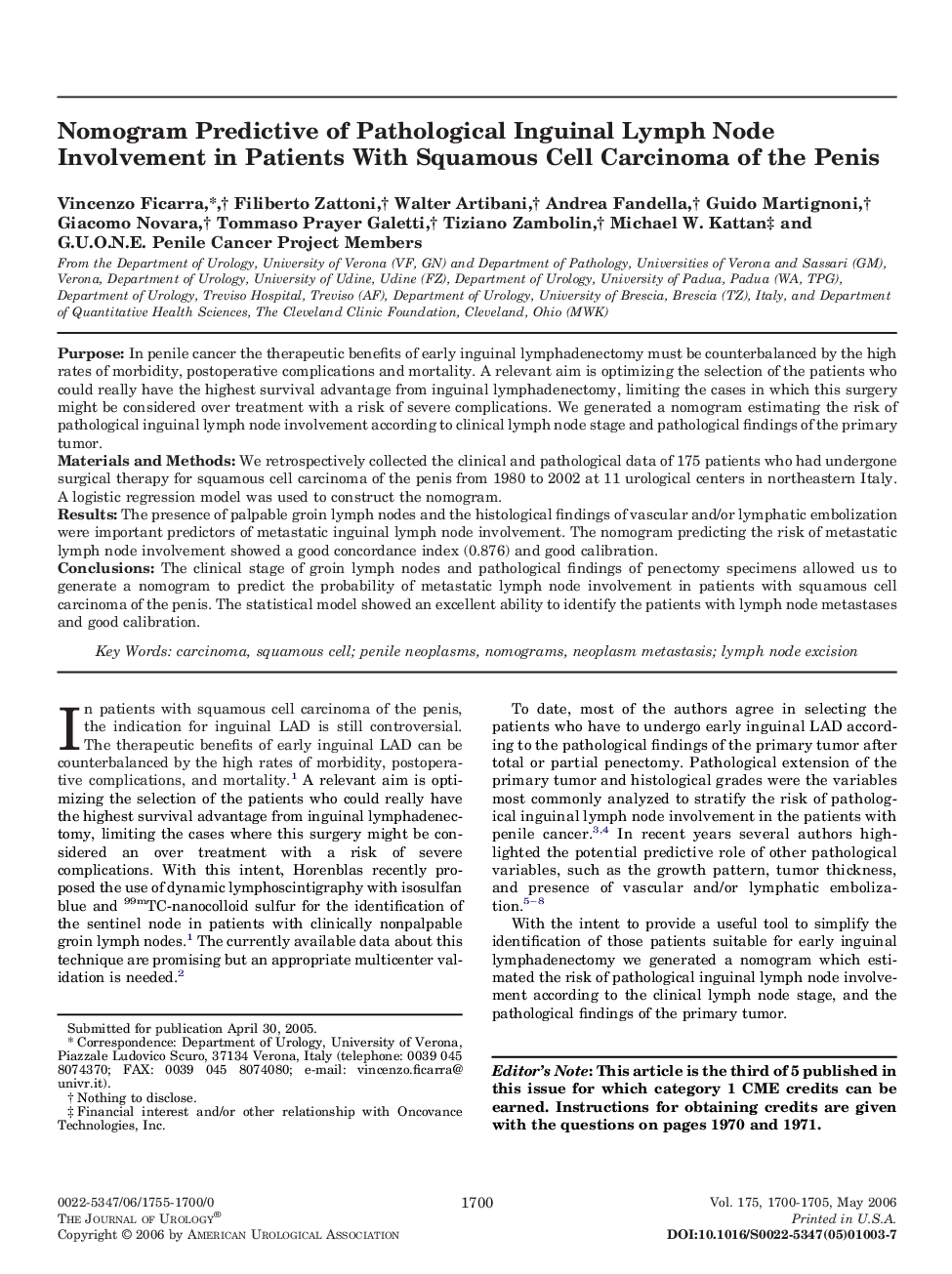| Article ID | Journal | Published Year | Pages | File Type |
|---|---|---|---|---|
| 3876724 | The Journal of Urology | 2006 | 6 Pages |
PurposeIn penile cancer the therapeutic benefits of early inguinal lymphadenectomy must be counterbalanced by the high rates of morbidity, postoperative complications and mortality. A relevant aim is optimizing the selection of the patients who could really have the highest survival advantage from inguinal lymphadenectomy, limiting the cases in which this surgery might be considered over treatment with a risk of severe complications. We generated a nomogram estimating the risk of pathological inguinal lymph node involvement according to clinical lymph node stage and pathological findings of the primary tumor.Materials and MethodsWe retrospectively collected the clinical and pathological data of 175 patients who had undergone surgical therapy for squamous cell carcinoma of the penis from 1980 to 2002 at 11 urological centers in northeastern Italy. A logistic regression model was used to construct the nomogram.ResultsThe presence of palpable groin lymph nodes and the histological findings of vascular and/or lymphatic embolization were important predictors of metastatic inguinal lymph node involvement. The nomogram predicting the risk of metastatic lymph node involvement showed a good concordance index (0.876) and good calibration.ConclusionsThe clinical stage of groin lymph nodes and pathological findings of penectomy specimens allowed us to generate a nomogram to predict the probability of metastatic lymph node involvement in patients with squamous cell carcinoma of the penis. The statistical model showed an excellent ability to identify the patients with lymph node metastases and good calibration.
